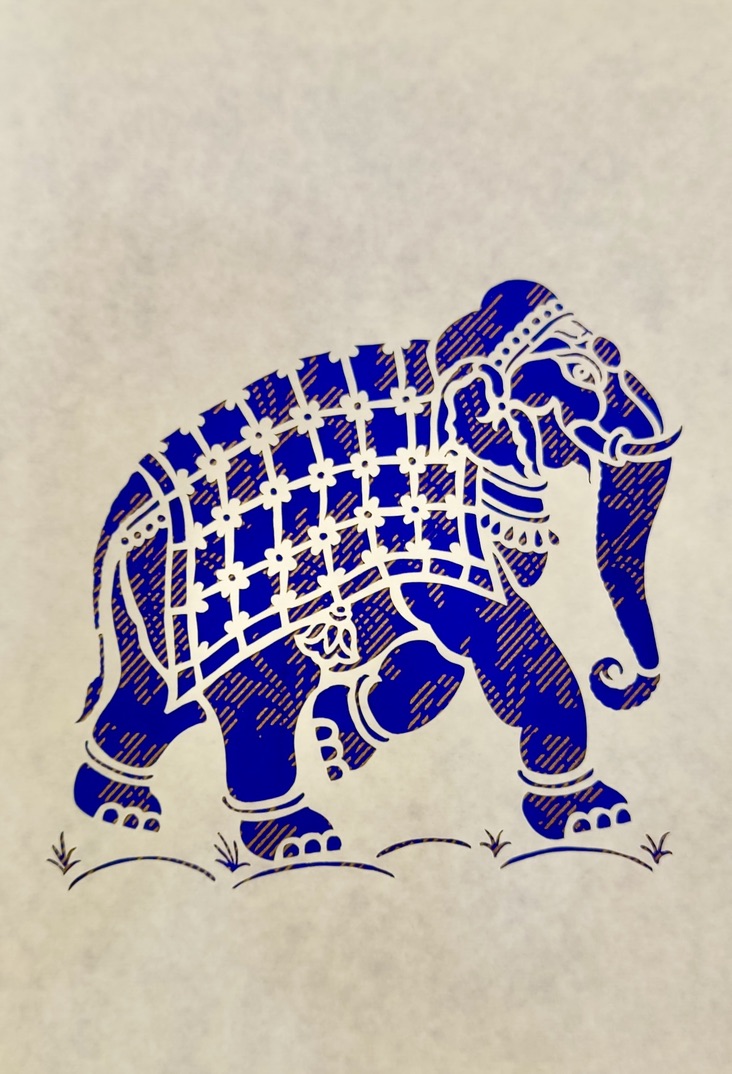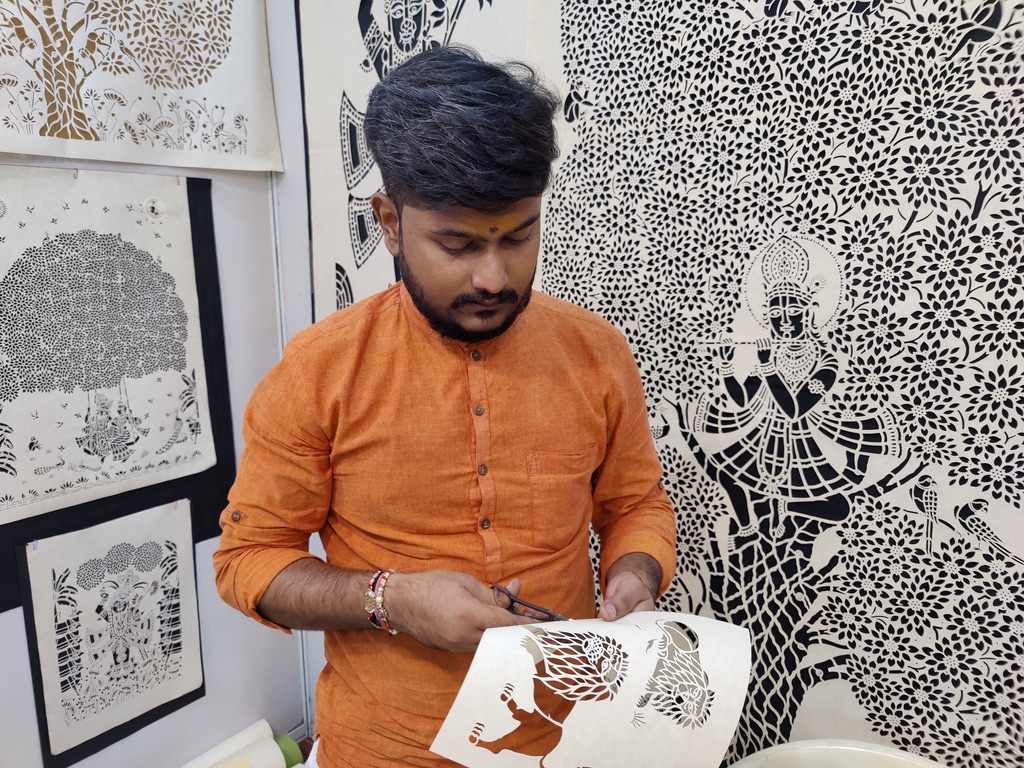SANJHI ART
The art of paper cuts, known as Sanjhi, holds a special place within Vaishnavite temples, especially during Pitra Paksha, a 15-day period of mourning and remembrance dedicated to ancestors. These intricate paper-cut images often depict Radha and Lord Krishna, serving as a visual homage within devotional practices.
Sanjhi manifests in a variety of forms — cow dung-based, floral, wall-mounted, and the exceptional Jal Sanjhi. In Jal Sanjhi, a delicate layer of fine chalk powder is spread over water, creating an impervious surface. A paper-cut stencil is gently laid on top, and colored powder is sprinkled. Once the stencil is lifted, the design remains delicately on the water’s surface, forming a stunning, temporary artwork.


ABOUT SANJHI ART
Sanjhi is a refined and highly specialized craft that requires precision, patience, and years of practice. Master artists first sketch the design, which is then cut using a handcrafted scissor by trained artisans. Specialization plays a key role — some artisans focus solely on the most intricate sections.
Traditionally, this art form was exclusively practiced by men, but with time, this has evolved, opening doors for wider participation. In recent years, Sanjhi has moved beyond its temple roots. It now finds new life in contemporary applications — from interior decor such as doors, wall panels, and lamps to various forms of functional art. These adaptations have expanded the reach of Sanjhi and provided sustainable livelihoods for its practitioners.
HISTORY
Sanjhi art has a rich heritage spanning three generations, with each era contributing its share of innovations. The 1970s marked a turning point, where the technique evolved — moving away from assembling multiple paper segments to creating the entire image on a single sheet. This shift demanded higher skill and elevated the visual complexity of the artwork.
Despite its diminishing ritualistic use, Sanjhi has managed to survive and adapt. Its journey from temple floors to modern homes is a testament to both its aesthetic appeal and the resilience of the artisan communities who continue to preserve and innovate within the tradition.



